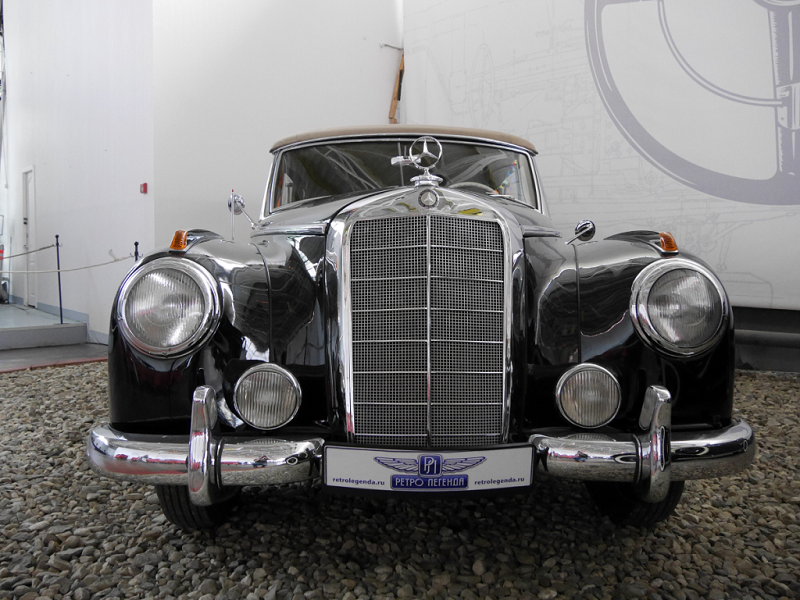Mercedes-Benz 300 Adenauer Convertible (1954): 115 hp. Moscow transport museum
The four door 300 (W186) was introduced at the Frankfurt Motor Show in April 1951 and entered series production in November 1951. It had no “a” designation, which was informally added, along with the “b” and “c”, by later enthusiasts seeking to distinguish the three W186 generations.
Available as both a saloon and cabriolet, it featured graceful modernist bodywork atop Mercedes’ proven X-frame chassis. An all new 3.0 L (2996 cc/182 in³) overhead cam, aluminum head M186 straight-6 was coupled to a 4-speed all-synchromesh manual gearbox. Twin downdraft Solex carburetors and an innovative diagonal head-to-block joint that allowed for oversized intake and exhaust valves produced 115 PS (85 kW; 113 hp) at a 6.4:1 compression ratio.
Designed to give reliable service under prolonged hard use, the engine featured deep water jackets, thermostatically controlled oil cooling, copper-lead bearings and a hardened crankshaft. With no natural cruising speed, the car could sustain anything up to its maximum speed all day, road conditions permitting.
The combination of a rigid X-shaped ovoid steel tube frame and four-wheel independent suspension provided surprisingly nimble handling. Double wishbones, coil springs, and a stabilizer bar were used up front and Mercedes’ typical double coil spring swing axle in rear. An innovative dashboard-operated rear load-leveling suspension engaged a torsion bar to increase stiffness by one-third when needed, and a pedal-operated central lubrication system kept friction points silent. Brakes were hydraulic drum all around, steering worm-and-sector, replaced in 1952 by recirculating ball.
A total of 6,214 saloons and 591 Cabriolet Ds, retroactively referred to as the “300a” series, were produced through September, 1955, including a brief 300b run incorporating elements of the 300c’s partial facelift prior to its debut.
The W186 is often identified as an Adenauer after Konrad Adenauer, the first Chancellor of the Federal Republic of Germany (West Germany), who employed six custom cabriolet, hardtop saloon, and landaulet versions of the W186 and its successor W189 during his 1949-1963 tenure. Among the custom features in these “parade cars” were writing desks, sirens, curtains, dividing partitions, sunroofs, and half-roof “landaulet” configurations.












